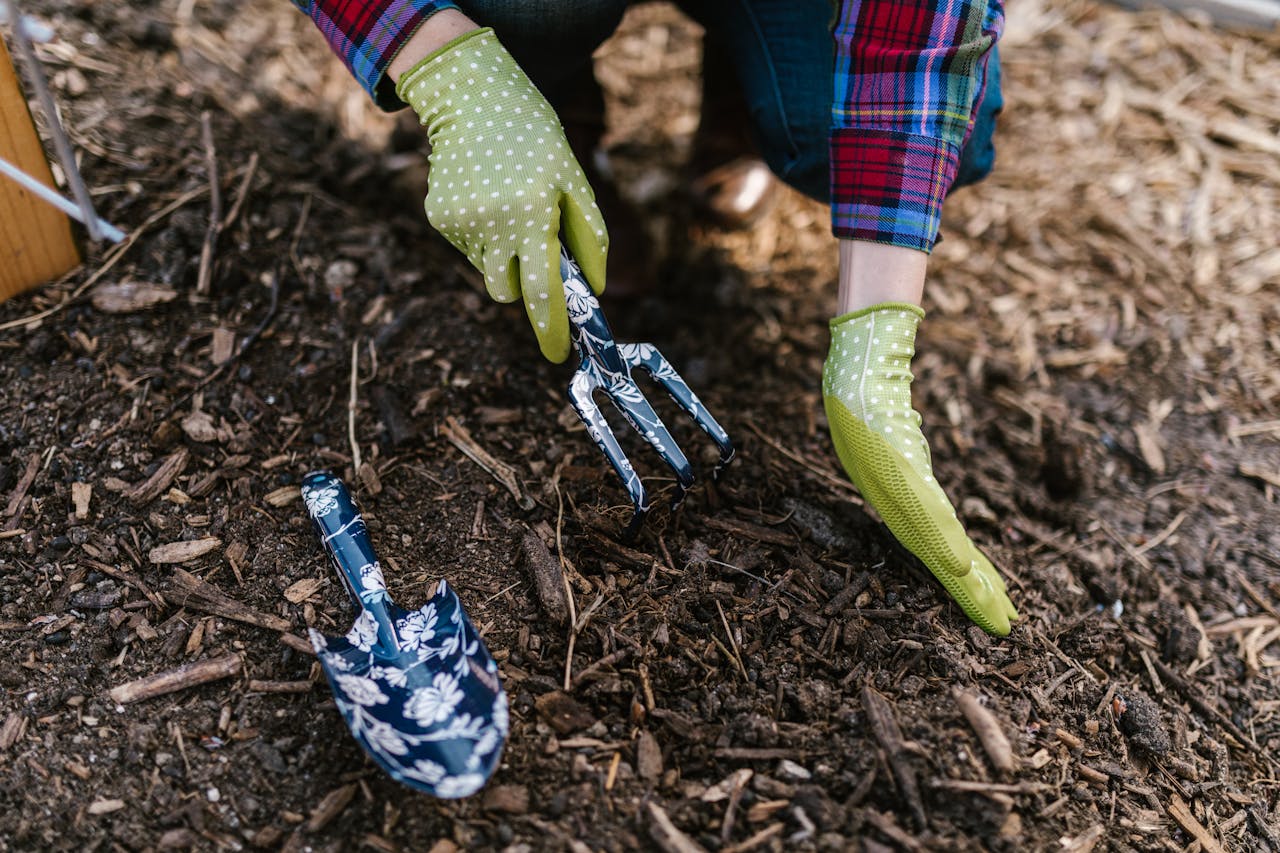
Image Source: Pexels
Mulch is often used in gardening to retain moisture and deter weeds. But did you know that some mulches are toxic? Pets, children, and vulnerable individuals are all at risk when it comes to toxic mulch. Plus, many mulches attract unwanted pests. There’s a lot that you need to know about these concerns before you pick your mulch for your garden. Here are 10 hidden dangers that could be lurking in your backyard mulch and how they might affect your garden, pets, and even your family’s health.
1. Toxic Mulch
Before spreading backyard mulch, always read the labels. Some mulches, like cocoa mulch, contain theobromine, which is highly toxic to dogs and cats. Even small amounts can cause vomiting, seizures, or death if ingested. Train your pets not to go in mulch or create barriers with stones or bricks. You can also use non-toxic alternatives like natural shredded straw, pine bark, or Cyprus mulch.
2. Fungal Growth
Certain wood-based mulches can foster artillery fungus, which shoots sticky black spores that stain siding, cars, and fences and are nearly impossible to remove. Never spread wet mulch. If you are concerned about fungal growth, you can use Pine bark nuggets. This variety of mulch is less likely to produce artillery fungus.
3. Mold and Mildew
Mulch that stays too wet can become a breeding ground for mold, mildew, or slime molds, which can cause allergic reactions or respiratory issues, especially in sensitive individuals. Don’t overwater mulched areas to avoid mold. You should also turn the mulch periodically to aerate it. Always remove any white or black fungal growth as it appears, so it doesn’t spread.
4. Attracting Termites and Pests
Wood mulch, especially when piled near your home’s foundation, can attract termites, ants, and cockroaches, which may migrate indoors and cause structural damage. You should always keep mulch at least 12 inches away from foundations. Use finer, compacting mulch that’s less hospitable to pests.
5. Spontaneous Combustion
Large piles of mulch under hot, dry conditions can build internal heat and spontaneously combust, posing a fire risk especially when stored too close to buildings. To avoid this, keep mulch layers no more than 2–3 inches deep. You should also avoid piling mulch near structures. Lastly, water mulch during dry periods to reduce heat buildup.
6. Hiding Spots for Ticks and Fleas
Thick mulch creates a cool, moist environment that’s ideal for ticks and fleas, increasing your risk of Lyme disease and other infections for you and your pets. You can always rake mulch regularly to disrupt nesting. Additionally, living ground covers like clover or creeping thyme are a better alternative. Or you can use cedar mulch that naturally repels some insects and rodents.
7. Weed Seed Contamination
Some mulch, especially low-quality or recycled varieties, may contain weed seeds, leading to unwanted plant growth that’s difficult to control. You can use a weed barrier underneath your mulch to help with this. In addition, you should inspect your mulch for contaminants before using it. Some mulches are certified weed-free as well.
8. Nitrogen Depletion
Fresh wood mulch can temporarily rob the soil of nitrogen as it breaks down, which can stunt plant growth or yellow your lawn and garden beds. To prevent nitrogen depletion when using mulch, avoid mixing fresh wood chips or sawdust directly into the soil, as this can cause microbes to steal nitrogen from plants during decomposition. Instead, use aged or composted mulch, which has already broken down and won’t tie up soil nutrients. You can also add a nitrogen-rich fertilizer, like composted manure, blood meal, or fish emulsion, before applying mulch to help maintain soil balance. For a safer alternative, consider using shredded leaves, grass clippings, or finished compost, which have more balanced nutrient profiles.
9. Harmful Chemicals in Dyed Mulch
Colored or dyed mulch (especially black or red varieties) is sometimes made from recycled wood, which can contain arsenic, lead, or other chemicals from old pallets or treated lumber. Always buy your mulch from reputable sources. If mulch has a very strong chemical smell, avoid using it. Instead, compost mulch is a good natural alternative that isn’t harmful.
10. Allergens and Airborne Particles
Chipped or shredded mulch can release dust and allergens, especially when disturbed or freshly laid, irritating the eyes, skin, or lungs of sensitive individuals. You can wear a mask when spreading mulch if you need to. Also, don’t use mulch too close to the windows of your home. Rubber or stone can be used in the areas of air intake if you are sensitive.
Managing The Risk
While mulch offers many benefits for your garden, it’s important to be aware of hidden risks like nitrogen depletion and other potential hazards. By choosing the right type of mulch, applying it properly, and taking steps to manage its impact, you can protect your plants, home, and health. Safer alternatives like composted mulch, shredded leaves, or gravel can help you enjoy the advantages of mulching without the downsides. With a little planning, mulch can remain a valuable and safe part of your backyard landscape.

Teri Monroe started her career in communications working for local government and nonprofits. Today, she is a freelance finance and lifestyle writer and small business owner. In her spare time, she loves golfing with her husband, taking her dog Milo on long walks, and playing pickleball with friends.
Leave a Reply